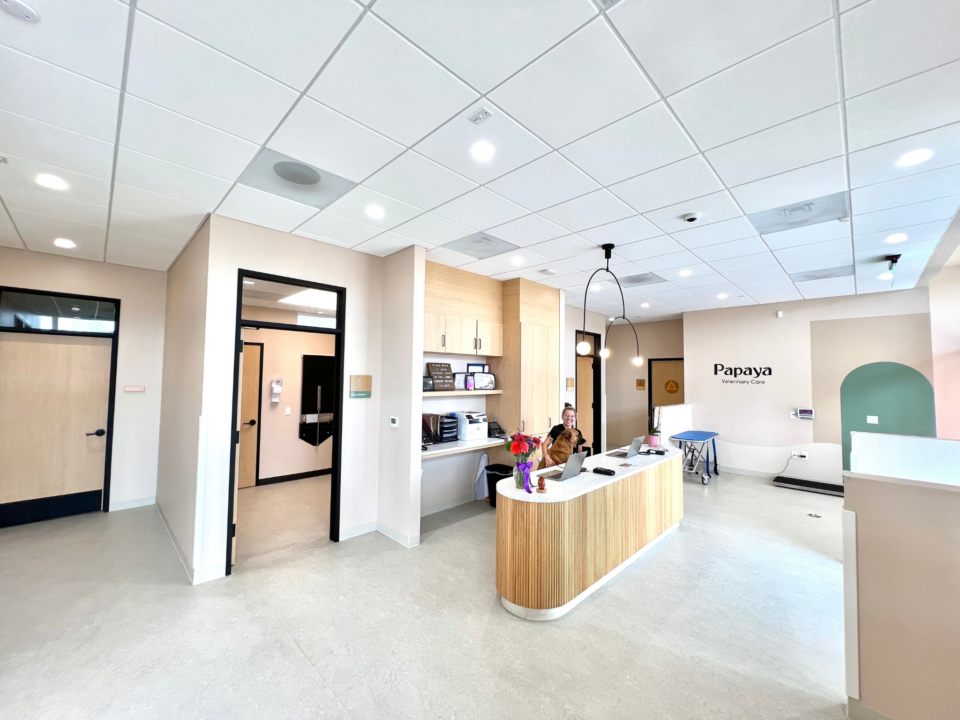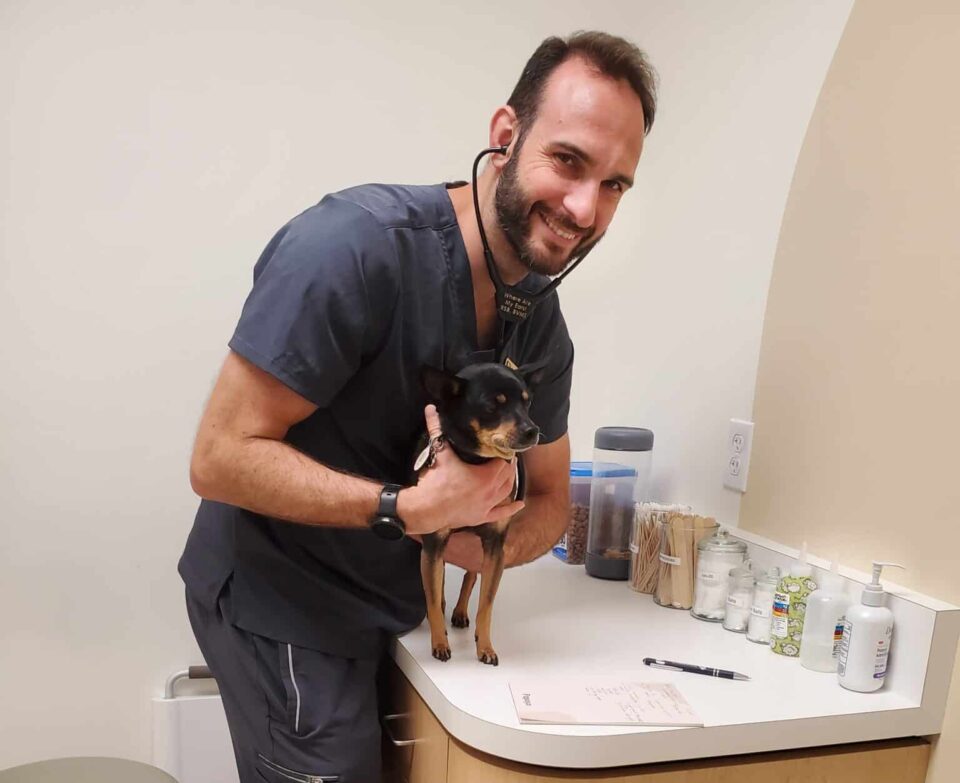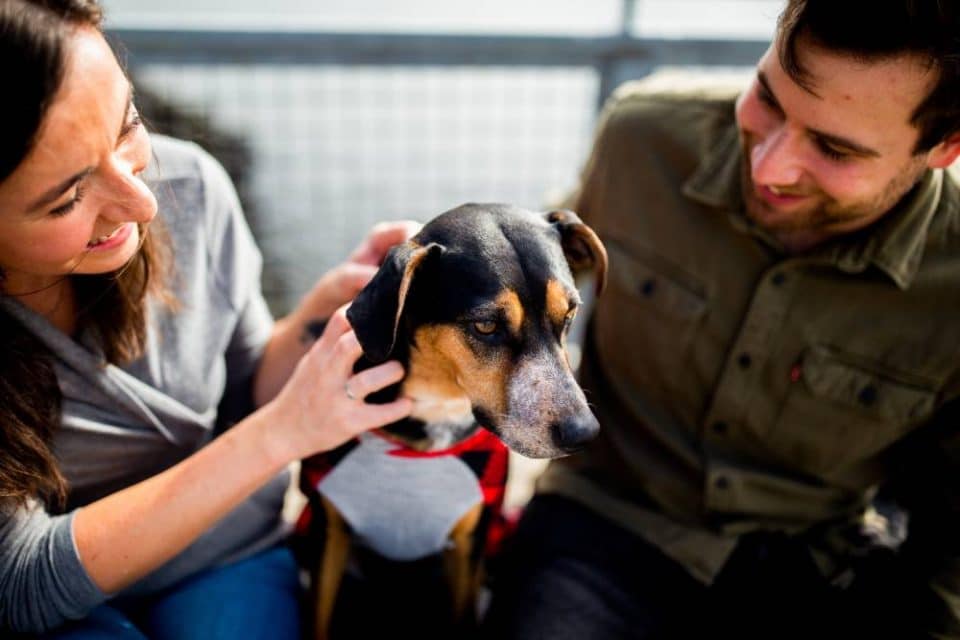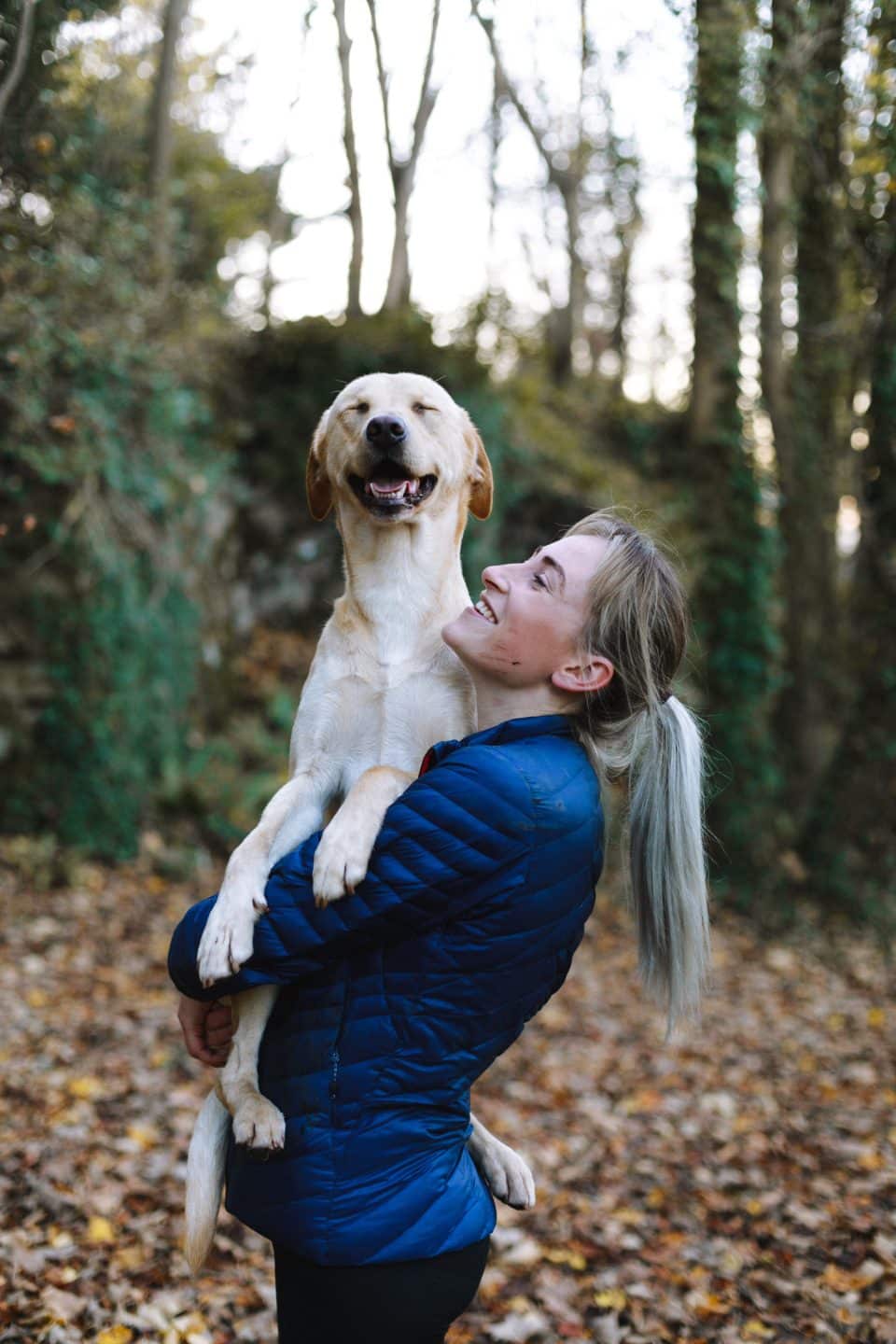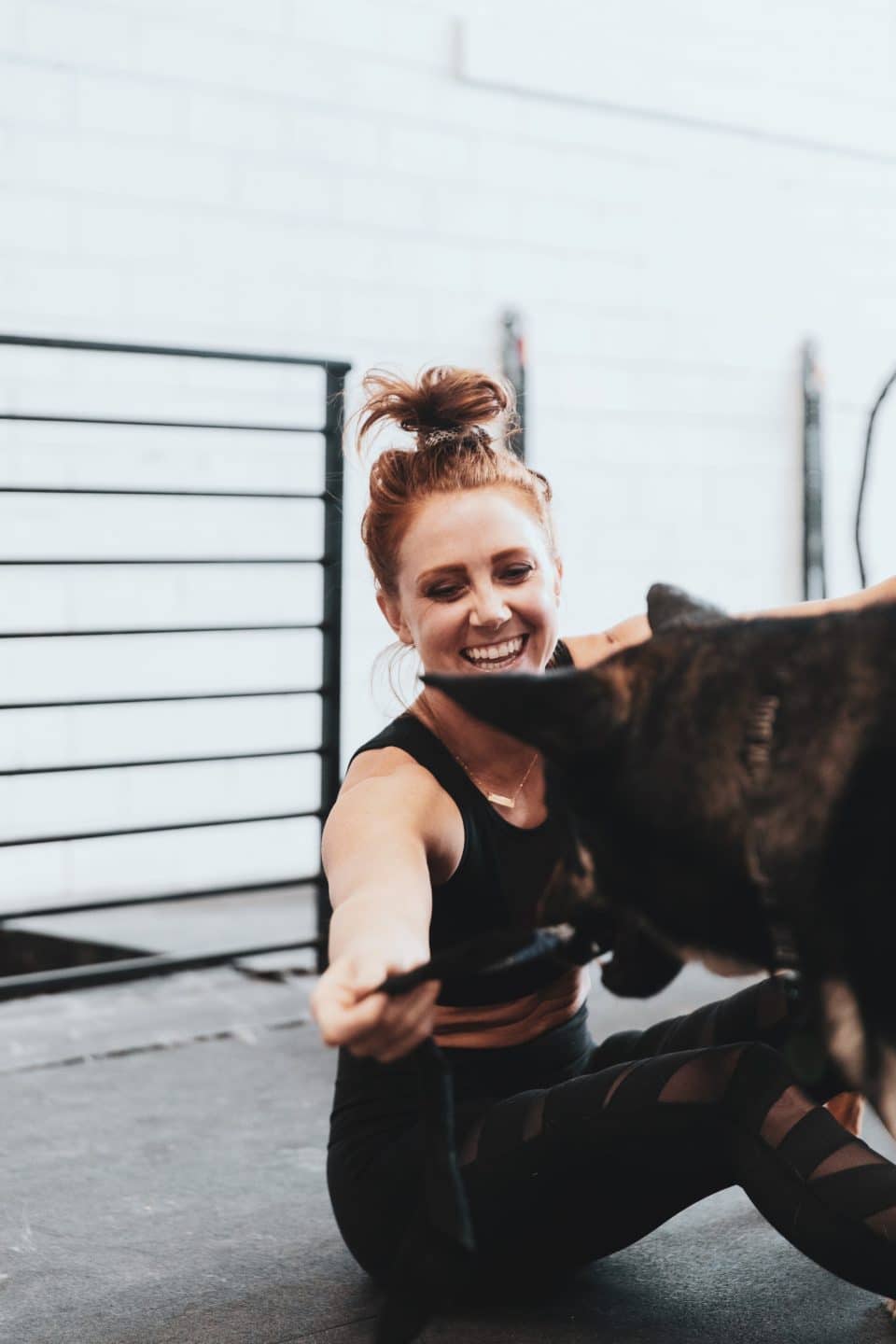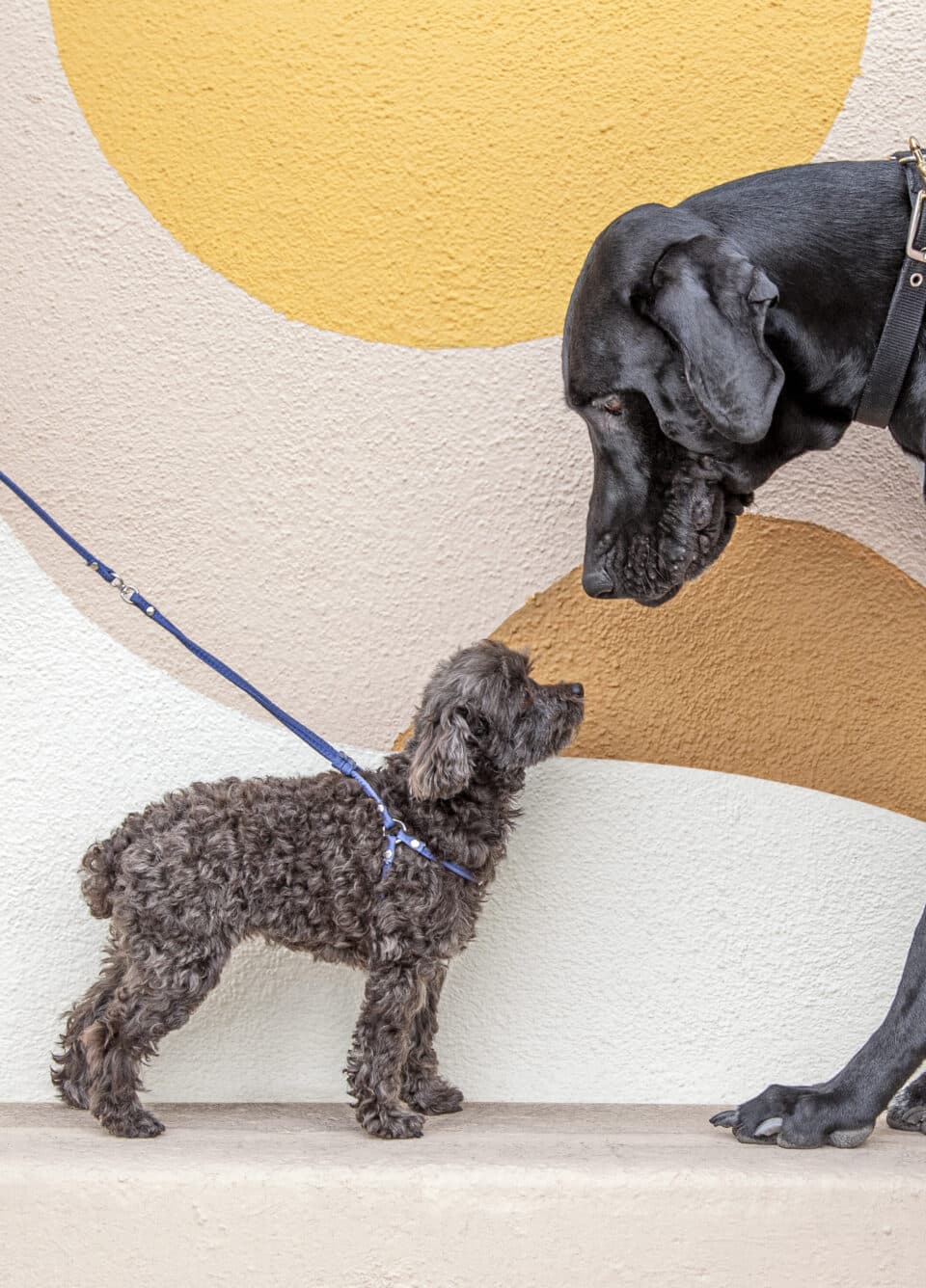Dogs
7 min read
How Many C-Sections Can a Dog Have?
Published on Jul 7, 2023

Is there anything more exciting than a new litter of puppies? Watching a pack of newborn pups roll around, eyes barely open, is a heart-warming experience like no other.
But puppies don’t appear out of thin air (even though we wish they did). Like all mammals, female dogs have to give birth to their adorable offspring. And sometimes, puppies have to enter the world via a Cesarean (or c-section for short).
A c-section is a major procedure that involves surgically removing the puppies from a pregnant dog’s uterus. Because c-sections require anesthesia and recovery time, some veterinarians believe the fewer c-sections, the better. However, others suggest that the answer to the question “How many c-sections can a dog have?” is “As many as necessary.”
As always, the real answer depends on the situation. With that in mind, let’s talk more about how many c-sections a dog can have.
Why Some Veterinarians Recommend Limiting C-Sections
Officially, there’s no legal limit or recommendation for the number of cesarean section surgeries a dog can have in the US. There’s not even an agreed-upon answer among experts who do say c-sections should be limited.
However, the consensus seems to be that a female dog should have no more than 2–3 c-sections in her lifetime—and she should only have them when the procedure is essential.
There are several reasons why veterinarians believe in an upper limit to c-sections. Let’s look at a few of them here.
Number of Pregnancies
Naturally, the only reason for a dog to have multiple c-sections is if they have multiple pregnancies. And there’s reason to believe that dogs shouldn’t have puppies too frequently.
Biologically speaking, a female dog could have two to three litters a year for her entire adult life. While it’s hard to complain about having too many puppies, think about the quality of life for the mother: A dog that gives birth to dozens of litters would be pregnant all the time. That doesn’t sound like fun for your pet or for you.
For health and moral reasons, some organizations suggest limiting pregnancies for female dogs. For example, the Irish Kennel Club says that dogs should whelp no more than four litters in a lifetime. (Whelp is the fancy dog breeder term for “give birth to”).
Ultimately, if there’s an upper limit to the number of pregnancies a dog should have, that same limit should apply to the number of c-sections. Right now, that puts us at a maximum of four c-sections—but that number should likely be even lower.
Possible Risks
Health concerns give us another reason to limit canine c-sections. Of course, the science behind c-sections is well-established, and veterinarians have been performing canine c-sections for decades. Any risks involved are minor and predictable.
Still, there are risks. Some of the potential issues that can crop up during surgery include:
- Lack of oxygen – Dogs are given anesthesia during a c-section, which can keep the lungs from working at full capacity. For this reason, veterinarians often use a face mask to deliver oxygen to their canine patients.
- Vomiting and aspiration – General anesthesia can also make it more likely for a dog to throw up (then breathe it in) during the surgery. Pre-procedure medications can make vomiting less likely.
- Hemorrhage – Excessive bleeding from a damaged blood vessel can also occur, though veterinarians take great care to avoid hemorrhaging.
Again, we want to stress that c-sections performed by professional veterinarians under the right conditions are safe and effective. Even so, each procedure carries a small amount of risk, so some experts prefer to keep c-sections as a last resort.
Post-Surgery Complications
Even after a successful c-section, complications after dog c section are a possibility. Some of the signs to look out for include:
- Grogginess and exhaustion – For a few hours after surgery, your dog will be tired from the general anesthesia. During this time, you may notice her struggling to keep herself up. Be sure to keep a close eye on her during the first two to six hours of recovery, as she could topple onto the newborn puppies and injure them.
- Infection – Redness and pus around the incision can indicate an infection. To ensure your dog’s wound doesn’t become infected, keep the area clean and dry. Don’t let her lick or chew at the site of her incision, either.
If you suspect your dog is experiencing complications after a c-section, contact a veterinarian immediately.
Cost
Finally, the cost of a canine cesarean section may make you think twice about opting for multiple procedures. Simply put, dog cesarean section surgeries can be pricey. So, how much is the dog c section cost? Fees vary by state, animal clinics, and breed, but you can expect to spend at least $1,000 on a pre-planned c-section and as much as $3,000+ on an emergency procedure.
If your dog has multiple c-sections, these bills can add up. Of course, your pet’s health comes first, but it’s hard to ignore the financial aspect of it all.
Why Some Veterinarians Place No Upper Limit on C-Sections
Although many veterinarians believe in a caesarean section limit for health and moral reasons, others have a different philosophy.
That’s because, in theory, there’s no hard limit to the number of c-sections a dog could have. In fact, veterinarians can use the surgical scars from a previous c-section as a sort of roadmap to avoid causing any new damage during a second, third, or fourth surgery. As long as your dog is physically healthy, she can technically have a c-section—at least that’s the line of thinking.
To find out what’s best for your dog, talk to your veterinarian about c-sections and the birthing plans for your best friend.
When a Canine C-Section is Necessary
Regardless of personal and professional beliefs, c-sections are sometimes inevitable. Your veterinarian will know when your dog needs to have a c-section—whether she’s already had one or not.
Here are the reasons a dog might need a Cesarean:
For Emergency Purposes
Above all, c-sections are emergency procedures. In an emergency, the question “How many c-sections can a dog have?” goes out the window. If the dog surgery is necessary to keep the mother and her puppies alive and well, your veterinarian will probably hop to it.
What constitutes a whelping emergency? Any of the following scenarios could call for a c-section:
- Post-term pregnancy – For most dogs, pregnancy lasts around 63 days. If your dog doesn’t go into labor after this typical period passes, your veterinarian may use medication to stimulate contractions. If the medications don’t do the trick, it might be time for a c-section.
- Blood- or pus-colored discharge – In the days leading up to labor, your dog should only produce clear or whitish vaginal discharge. If the discharge is any shade of yellow, green, black, or red, your dog may have an internal infection. Your veterinarian can perform tests to check on the health of your pet and her puppies. In cases like these, a c-section may be necessary to ensure the puppies are healthy.
- Extended birthing time – If your dog goes into labor but doesn’t deliver puppies for several hours—and medical stimulation doesn’t work—a c-section may be just what the doctor ordered. Alternatively, if your dog whelps some but not all of her puppies, she may be too fatigued to continue naturally. A c-section can help her finish the job.
- Abnormal puppy positions – As with human babies, there’s a right way and a wrong way for puppies to come out. Head-first is ideal, though tail-first with the limbs outstretched is okay, too. Any other position can lead to dystocia, the catch-all name for labor difficulties like these. Whelping a newborn puppy in the wrong position can harm the mother and the newborn puppy, so a c-section is usually the safest route.
For Specific Breeds
There are also non-emergency situations that require c-sections. Some dog breeds have large, wide heads and narrow pelvises, making natural birth uncomfortable.
These dog breeds will often need a c-section to avoid complications:
- English bulldogs
- French bulldogs
- Pekingese
- Mastiffs
- Boston terriers
- Scottish terriers
- Sealyham terriers
- Saint Bernards
If you’re a parent to one of these breeds, your veterinarian may suggest you schedule a c-section birth ahead of time.
For Personal Preference
Some breeders simply prefer c-sections, mostly as a way to avoid the complications that can happen during natural birth. Of course, there are also complications during c-sections, so there’s no such thing as a perfect solution.
When a c-section is chosen by you rather than for you, it’s known as an elective c-section. Be sure to talk to your veterinarian if you’d prefer an elective c-section over natural birth for your dog; ideally, it should be a joint decision that focuses on what’s best for your pet.
Welcome Your Puppies at Papaya Veterinary Care
So, how many c-sections can a dog have safely? Ultimately, every dog is different, as is every situation. The best way to know if your dog is ready for a c-section—whether it’s their first or their fourth—is to talk to a veterinarian you trust.
At Papaya Veterinary Care, we care for your pet based on their individual needs. Our approach to animal care is simple: We aim to help minimize your pet’s fear, anxiety, and stress to provide you and your pet the best possible experience.
Whether your dog is currently pregnant or you’re hoping to have puppies in the future, we’d love to hear from you. Don’t hesitate to get in touch with any questions about c-sections, natural birth, or other pet health concerns.
Sources:
Irish Kennel Club. Responsible Breeding Guide. https://www.ikc.ie/breeding/responsible-breeding-guide/
The World Small Animal Veterinary Association. Caesarean section. https://wsava.org/wp-content/uploads/2020/01/Caesarean-section.pdf
American Kennel Club. Emergency C-Sections For Dogs: When to Go to the Vet. https://www.akc.org/expert-advice/dog-breeding/emergency-c-sections-for-dogs/
American Kennel Club. Best Practices for Whelping & Caring for Newborn Puppies. https://www.akc.org/expert-advice/dog-breeding/whelping-and-caring-for-newborn-puppies/
American Kennel Club. Gestation Period: How Long Are Dogs Pregnant? https://www.akc.org/expert-advice/dog-breeding/how-long-are-dogs-pregnant/

